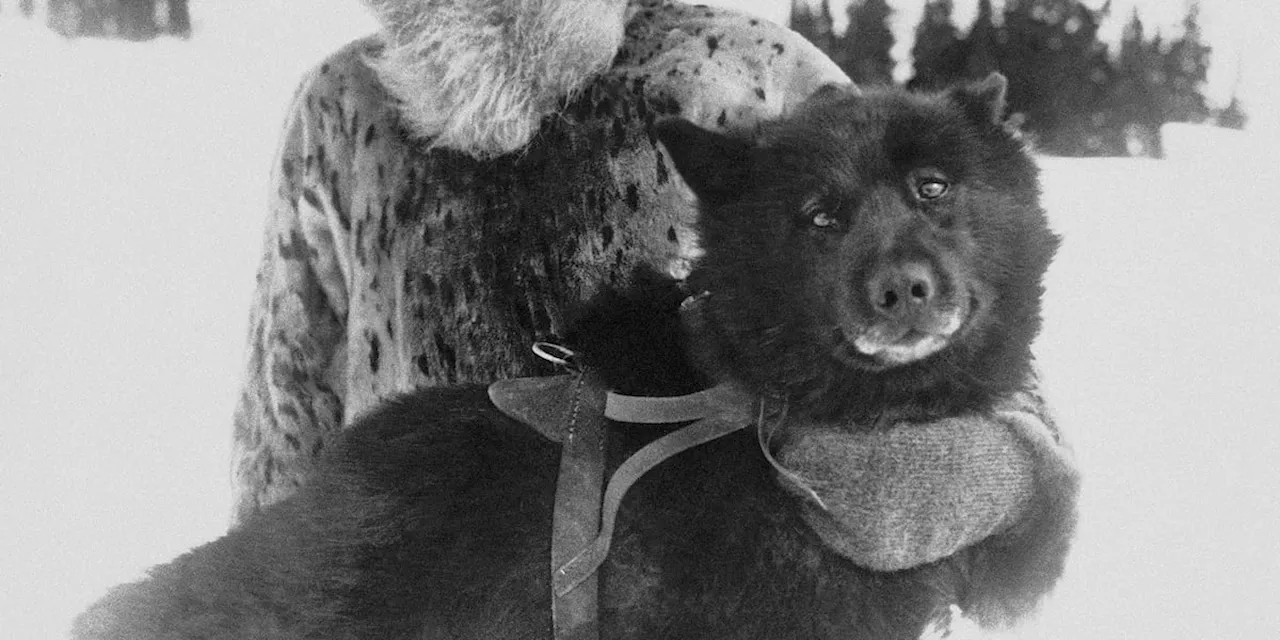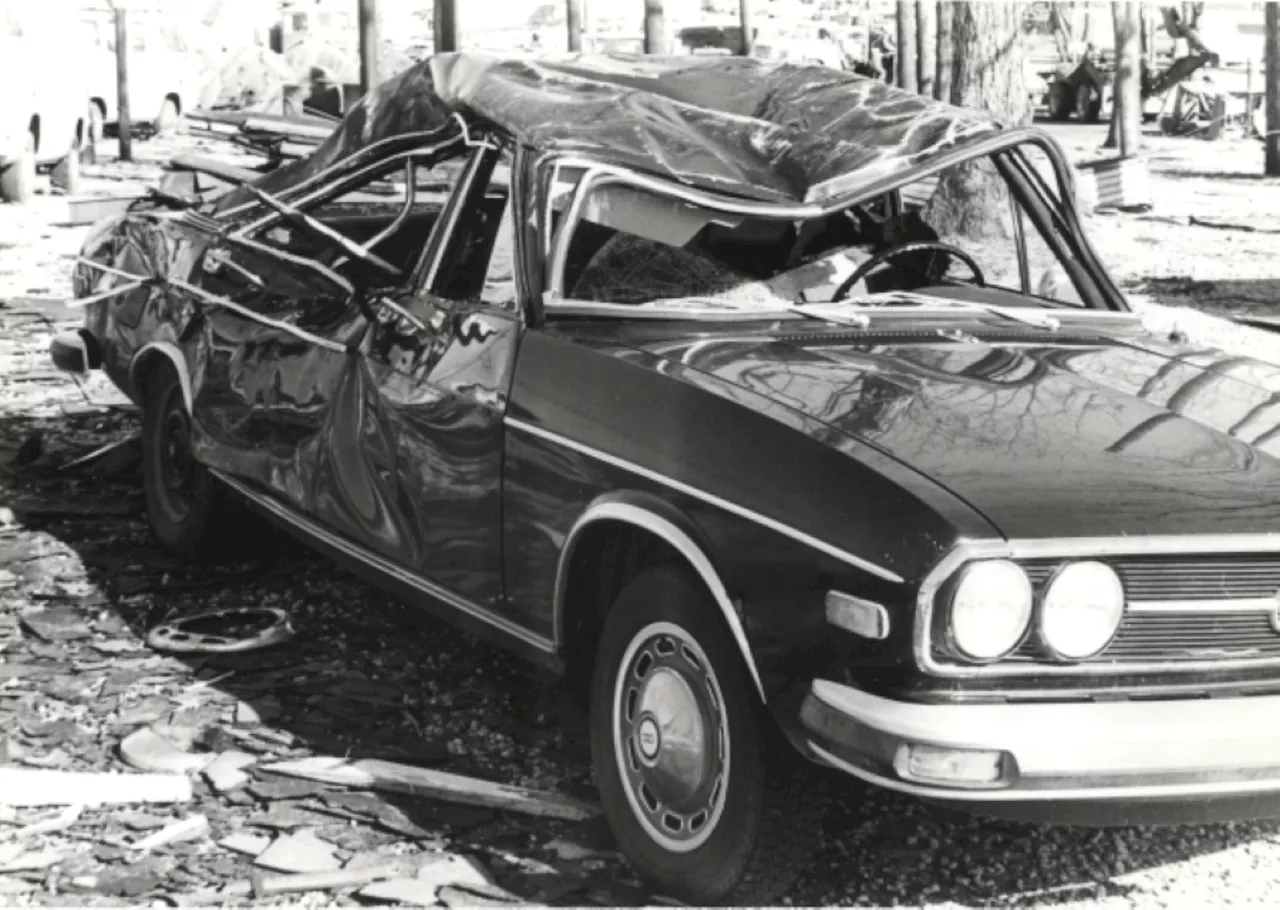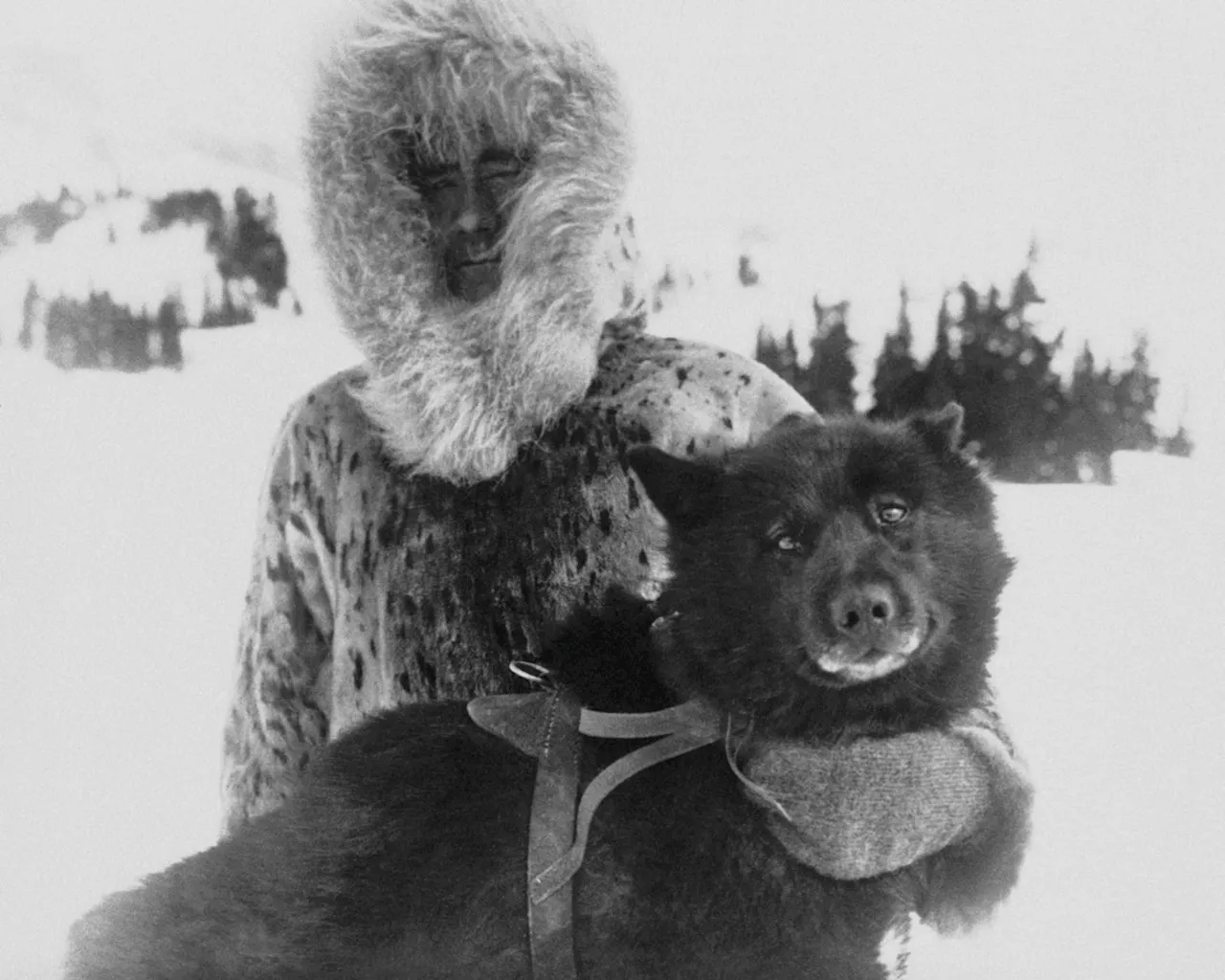A century ago, a team of determined mushers and their sled dogs embarked on a perilous journey to deliver life-saving diphtheria serum to the town of Nome, facing extreme weather and treacherous conditions along the way.
FILE - Gunnar Kaasen and with his dog Balto , the heroic dogsled team leader, sit for a portrait in the early 1920s. ANCHORAGE, Alaska — The Alaska Gold Rush town of Nome faced a bleak winter. It was hundreds of miles from anywhere, cut off by the frozen sea and unrelenting blizzards, and under siege from a contagious disease known as the “strangling angel” for the way it suffocated children.
“People just dropped whatever they were doing,” she said. “These mushers got their teams ready and went, even though it was really cold and challenging conditions on the trail.” Nome, western Alaska’s largest community, had about 1,400 residents a century ago. Its most recent supply ship had arrived the previous fall, before the Bering Sea froze, without any doses of the antitoxin. Those the local doctor, Curtis Welch, had were outdated, but he wasn’t worried. He hadn’t seen a case of diphtheria in the 18 years he had practiced in the area.
West Coast hospitals had antitoxin doses, but it would take time to get them to Seattle and then onto a ship for Seward, an ice-free port south of Anchorage. In the meantime, enough for 30 people was found at an Anchorage hospital. Thanks to Alaska’s new telegraph lines and the spread of radio, the nation followed along, captivated, as 20 mushers — many of them Alaska Natives — with more than 150 dogs relayed the serum to Nome. They battled deep snow, whiteouts so severe they couldn’t see the dogs in front of them, and life-threatening temperatures that plunged at times to minus 60 degrees Fahrenheit .Seppala, a Norwegian settler, left from Nome to meet the supply near the halfway point and begin the journey back.
United States Latest News, United States Headlines
Similar News:You can also read news stories similar to this one that we have collected from other news sources.
 Team Recreates Historic Serum Run 100 Years LaterA team led by Jonathan Hayes departed from Nenana, Alaska, to recreate the legendary Serum Run, a 674-mile journey across treacherous terrain to deliver diphtheria antitoxin to Nome in 1925. The expedition, which aims to take around 20 days, includes a symbolic representation of the nine major pandemics of the last century and messages from Nenana children to those in Nome.
Team Recreates Historic Serum Run 100 Years LaterA team led by Jonathan Hayes departed from Nenana, Alaska, to recreate the legendary Serum Run, a 674-mile journey across treacherous terrain to deliver diphtheria antitoxin to Nome in 1925. The expedition, which aims to take around 20 days, includes a symbolic representation of the nine major pandemics of the last century and messages from Nenana children to those in Nome.
Read more »
 Looking Back at the Scopes Monkey Trial Nearly 100 Years LaterLearn how it was framed as a battle over the teaching of evolution, but the participants didn’t see it quite that way.
Looking Back at the Scopes Monkey Trial Nearly 100 Years LaterLearn how it was framed as a battle over the teaching of evolution, but the participants didn’t see it quite that way.
Read more »
 100 Years Later, Nome Remembers 'Great Race of Mercy'In 1925, a team of sled dogs and mushers raced over 600 miles to deliver life-saving diphtheria serum to the isolated Alaskan town of Nome. Now, a century later, Nome is commemorating the heroic feat known as the 'Great Race of Mercy'.
100 Years Later, Nome Remembers 'Great Race of Mercy'In 1925, a team of sled dogs and mushers raced over 600 miles to deliver life-saving diphtheria serum to the isolated Alaskan town of Nome. Now, a century later, Nome is commemorating the heroic feat known as the 'Great Race of Mercy'.
Read more »
 Remembering the Pell City Tornado: 50 Years LaterAlabama remembers the destructive path of a tornado that ripped through Pell City and Ragland on January 10, 1975, 40 years on. The anniversary will be commemorated with a presentation by renowned Alabama meteorologist James Spann and an exhibit at the Pell City Museum.
Remembering the Pell City Tornado: 50 Years LaterAlabama remembers the destructive path of a tornado that ripped through Pell City and Ragland on January 10, 1975, 40 years on. The anniversary will be commemorated with a presentation by renowned Alabama meteorologist James Spann and an exhibit at the Pell City Museum.
Read more »
 Remembering the 'Miracle on the Hudson': 16 Years LaterOn January 15, 2009, US Airways Flight 1549, nicknamed the 'Miracle on the Hudson,' made a historic water landing on the Hudson River, captivating the world with its story of courage and survival. Sixteen years later, we revisit this unforgettable event, recalling the bravery of Captain Chesley 'Sully' Sullenberger and his crew, the resilience of the passengers, and the swift response of first responders.
Remembering the 'Miracle on the Hudson': 16 Years LaterOn January 15, 2009, US Airways Flight 1549, nicknamed the 'Miracle on the Hudson,' made a historic water landing on the Hudson River, captivating the world with its story of courage and survival. Sixteen years later, we revisit this unforgettable event, recalling the bravery of Captain Chesley 'Sully' Sullenberger and his crew, the resilience of the passengers, and the swift response of first responders.
Read more »
 Bad Bunny Becomes the First Latin Artist to Tally 100 Career Hot 100 HitsBad Bunny has become the first Latin artist with 100-plus career Hot 100 hits. Get the details.
Bad Bunny Becomes the First Latin Artist to Tally 100 Career Hot 100 HitsBad Bunny has become the first Latin artist with 100-plus career Hot 100 hits. Get the details.
Read more »
